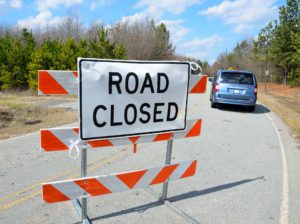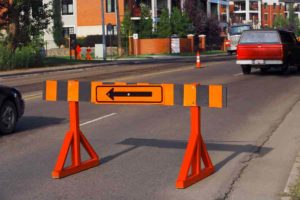- 6001 Elvas Ave, Sacramento
- Mon-Fri 7 AM-5 PM
- (916) 451-5176
If you’re in the road construction and repair industry, you understand the importance of having accurate, visible road proper signage for public roads, city streets, and highways. Work zones must use numerous traffic channelizing devices to direct traffic patterns while warning motorists about potential dangers in and around the surrounding area.
Here we discuss the different types of traffic control devices used in various situations to increase driver awareness and improve road safety for pedestrians.
 Traffic control devices come in various shapes and sizes. They are positioned in strategic public zones to enhance a sense of situational awareness among all road users, particularly when regulating traffic. Depending on the type of control traffic equipment, its purposes, and positioning, these devices can successfully inform motorists about route changes, announce road redirections, and most importantly, alert them about looming dangers.
Traffic control devices come in various shapes and sizes. They are positioned in strategic public zones to enhance a sense of situational awareness among all road users, particularly when regulating traffic. Depending on the type of control traffic equipment, its purposes, and positioning, these devices can successfully inform motorists about route changes, announce road redirections, and most importantly, alert them about looming dangers.
Because traffic signals offers the most visually tactile indicators that direct, guide, and inform, their application is not limited to public or private roads, streets, and highways. An efficient and well-established uniform traffic control devices for the safety of people, buildings, assets, and utilities. It’s, therefore, important to install the right traffic control devices within large premises that share roadways with pedestrians, like hospitals, campuses, supermarkets, or shopping mall parking lots.
 Public roads have an extensive selection of traffic control devices and equipment that mainly focus on road signs, signals, pavement markings, and barriers. The following are some of the most important and commonly used traffic control devices:
Public roads have an extensive selection of traffic control devices and equipment that mainly focus on road signs, signals, pavement markings, and barriers. The following are some of the most important and commonly used traffic control devices:
Knowing the right type, size, and color of traffic control devices to use ensures public and property safety. It’s also the most effective way to make public transportation safer and more efficient as motorists travel through temporary traffic control zones. Regulatory signs, warning or signal devices, and informatory traffic signs are among the most useful traffic control tools that are utilized to regulate traffic, divert vehicles, and communicate vital information. Reflective road markings, including pavement, curb, stop signs, and object markings, are crucial highway components. They act as psychological barriers that safely guide and control traffic. This helps channel the movement of pedestrians or pavement markings and cyclists on road surfaces for a smooth, orderly traffic flow.
Is safety a concern in your premises or construction project? Contact us or browse a vast collection of high-quality traffic control devices to suit your needs. These warning signs devices will optimize your traffic and crowd control efforts while providing a hedge of protection against visual deterrence and subsequent accidental impacts on most motor vehicle drivers.

Copyright ©2025 • Capitol Barricade